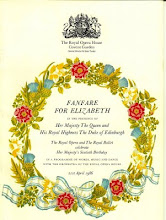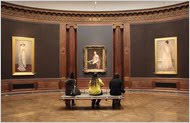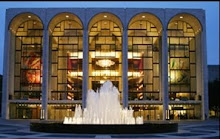skip to main |
skip to sidebar
Degas and the Nude-at the Museum of Fine Arts--10/5 through 2/5/2012
Degas and the Nude--a major exhibition at Boston's Museum of Fine Arts (MFA)--offers the most comprehensive look at the nudes of French artist Edgar Degas, known principally for his depictions of ballet dancers, portraits, Parisian working-class life, café interiors, street scenes and race track scenes.
Edgar Degas--1834-1917
Degas and the Nude, co-organized by the Museum of Fine Arts, Boston, and the Musée d’Orsay in Paris, features about 160 paintings, pastels, drawings, prints, monotypes, etchings, lithographs and sculptures, many of which have never been exhibited in the U.S. before, and the MFA is the only U.S. venue scheduled. From here the exhibition opens in March at the Musée d'Orsay. To put Degas in perspective, visitors will also see about 20 striking images of women by masters such as Jean-Auguste Ingres, Eugène Delacroix, Caillebotte, Mary Cassatt, Renoir, Toulouse-Lautrec, Matisse and Pablo Picasso. Degas participated in the Impressionist exhibitions in Paris, dating from 1874 to 1886. In the eighth and final Impressionist exhibition Degas exhibited 10 paintings of nude women in various stages of bathing, in which faces are rarely seen. Degas and the Nude reveals a master of the human form.
Although Degas is well-known for his paintings and sculptures of dancers and racetrack scenes, in this must-see exhibit Edgar Degas emerges as a master of the portrayal of women in natural settings: a woman sits on the tub's edge, wringing her hair; a woman steps into her morning bath; after washing, a woman contorts her body to dry herself; figures engaged in daily tasks common to everyone. Degas painted bathing women in such varied positions of squatting, bending, leaning, twisting or climbing into tubs. There were also some paintings of nude men. Degas painted real people.
A series of monotypes, not intended by Degas for public view as the wall text tells us, depicts scenes in Paris brothels, some of which are sexually explicit. In a few scenes there is a man present, and although the woman is nude, the man is conservatively dressed, sometimes in a corner as a passive observer, perhaps a voyeuristic effect, other times as an active participant. However, the intent was not so much to titillate but to comment on the world of the brothel and its role in 19th-century Parisian society, including issues of hygiene, health, morality and social class. It evokes the photographs by Eugène Atget (1857-1927), the Balzac of the Camera, the illustrious French photographer noted for his photographs capturing the old Paris in its various facets. Click here.
The MFA curator George T.M. Shackleford has created the first major exhibit exclusively devoted to the study of Degas's nudes over the course of his half-century career. The exhibition is organized into six sections which follow Degas's evolution in his treatment of the female form.
After Degas's death in 1917 friends and connoisseurs were shocked on seeing some of the gritty, unvarnished paintings of women never before shown in public.
Although this is a stunning, fascinating exhibition, I have always preferred Degas's paintings of dancers, dance classes, stage rehearsals, café and street scenes, musicians, horse racing and portraits. A sculpture of a dancer, which is part of the MFA's permanent collection in the Impressionist room, has always been a favorite, and on any visit to the MFA I drop in to revisit it.
Renoir (Impressionist-1841-1919) painting on the wall (Bal au Bougival-1883-MFA); Degas sculpture of La Petite Danseuse in front (c. 1881, cast in bronze in 1922)--MFA
La Toilette-1884-1886
Woman Combing Her Hair
The exhibition will be at the Musée d'Orsay, Paris, from March 13 until July 1st, 2012.
For a critique of this exhibition by Sebastian Smee of the Boston Globe, click here:
For a biography of Edgar Degas, click here:
For more Degas nude paintings, click here:
In this detailed biography of Degas, especially at the conclusion, there are many examples of the variety of his paintings and sculptures. Click here:
Phillips Collection, Washington D.C. Gallery, sheds new light on Edgar Degas's dancers.
On October 1st Washington D.C.'s Phillips Collection opened "Degas's Dancers at the Barre: Point and Counterpoint," an exhibit celebrating French impressionist painter Edgar Degas's vibrant depictions of French ballet students, a study he sustained for over 40 years.
The oil-on-canvas Dancers at the Barre will be displayed alongside other Degas works gathered from collections around the world. The exhibition runs through January 8, 2012.
One of the Phillips Collection's greatest treasures, the oil-on-canvas version of Dancers at the Barre, is the centerpiece of the exhibition.



































Dear Mary,
ReplyDeleteYour blog has a wealth of information and is a wonderful forum to discuss a wide variety of cultural topics and events. This latest one on Degas is a jewel!
Thanks for sharing… Diana
Thank you as always, Diana!
ReplyDelete